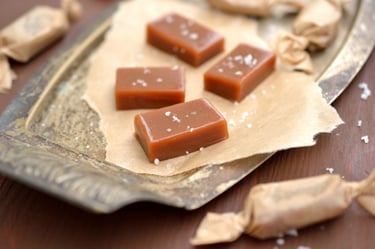 Do you have a family recipe or amazing food idea that you would like to turn into a commercial food product? There is plenty of opportunity, but there are many steps that need to be taken to get it right. Knowing these steps prior to launching your food product will save you a lot of time and money.
Do you have a family recipe or amazing food idea that you would like to turn into a commercial food product? There is plenty of opportunity, but there are many steps that need to be taken to get it right. Knowing these steps prior to launching your food product will save you a lot of time and money.
Produce/Promote/Profit
The Getting Your Recipe to Market program is designed to help a budding food entrepreneur take their product idea from concept to commercialization. The program guides you along a developmental pathway to help you produce, promote, and profit from your food idea. Learn how to:
-
Produce a safe and wholesome consumer food product, and determine how it will be developed, packaged, labeled, and produced for the consumer.
-
Promote your product through established retail market channels, and determine whether or not the product concept fills a unique consumer need that will result in repeat sales.
-
Profit from the sale of the product as an organized business.
Each of the following steps of the pathway to commercialization falls into one of these three categories within the organizational framework of the program, which will ensure greater success for your food product to go to market.
1. Market Survey
Survey the market and conduct primary and secondary market research to ensure you're creating a product consumers are eager to buy.
2. Product Formulation
Determine how the product will be safely developed, packaged, and produced.
3. Food Safety Analysis
Learn how to develop a safe and wholesome food product, along with licensing, regulations, product liabilities, business entities and other legal topics to help you avoid trouble.
4. Shelf Life and Stability Testing
Conduct studies to determine the length of time your product will retain specific qualities (safe microbial counts, vitamins, coloring, taste, odor) and to determine the “Best By” date for your product.
5. Packaging
Determine the proper size and type of packaging for your product (i.e. taking into consideration the height of shelves at the grocery store).
6. Ingredient/Packaging Vendors
Develop an understanding of safe ingredient and package handling processes when utilizing vendors.
7. Package/Label Design
Understand the six considerations for package design (identification, containment and protection, convenience, consumer appeal, environmental friendliness, and economy).
8. Primary/Secondary Packaging
Learn the difference between primary packaging (in direct contact with the food or beverage product) and secondary packaging (i.e. encases the primary product like a shrink-wrapped case) and how each one is used.
9. Complete Nutrition Label
Learn the technical requirements for placing nutrition facts on your product’s label (ingredients, nutrition facts, allergen information, etc.)
10. Design Review/Sample Label
Create a sample label for your food product according to labeling technical requirements, and learn to design a label that best markets your product.
11. Print Options/Vendors
Learn about the different printing processes, inks, and adhesives used to adhere labels to products.
12. Co-Packer/Self-Manufacturing
Learn about the different warehouse and storage systems for you product.
13. Production Equipment Needed
Learn to produce a safe and wholesome food product including food science, using a commercial kitchen, packaging, and distribution. Determine and learn about different production equipment and what is needed to create your product.
14. Select Manufacturing Options
Gain an understanding of the different manufacturing options available to you and select the one that best meets the needs of your product and your business.
15. Conduct a First Run Production
Conduct quality control testing of your product, and learn how to create and utilize a proper quality control program for your product and for proper food safety.
16. Determine the Best Market Channel
Learn how to properly distribute your product to wholesalers and retailers and take advantage of alternate sales channels.
17. Cost of Goods Sold Analysis
Learn how to calculate costs of goods sold (COGS), conduct break-even analysis, and use pricing models to forecast business financials and help ensure your business stays in good health. Also learn how to access capital and other financial keys to create a profitable product.
18. Manufacturer Suggested Retail Price
Determine whether or not your product is priced to sell and generate profit using a MSRP calculator.
19. Build a Startup Budget
Establish accounting practices to get your documents “out of the shoebox” and into an organized system.
20. Develop a Sales Pipeline
Learn to use PR, media, and promotional events to get attention and increase sales. Develop a solid brand for your product allowing you to expand your business. Work with key players in the food industry who can help you market and sell your product.
21. Build a Business
Now you can take your delicious recipe and your newfound food production, labeling, and pricing knowledge and launch your dream business!
Before taking your product to market, it’s important to understand the major steps that need to be taken to ensure that you are adhering to laws and regulations; marketing to the right audience; and building a profitable and healthy business, built on a solid foundation.




